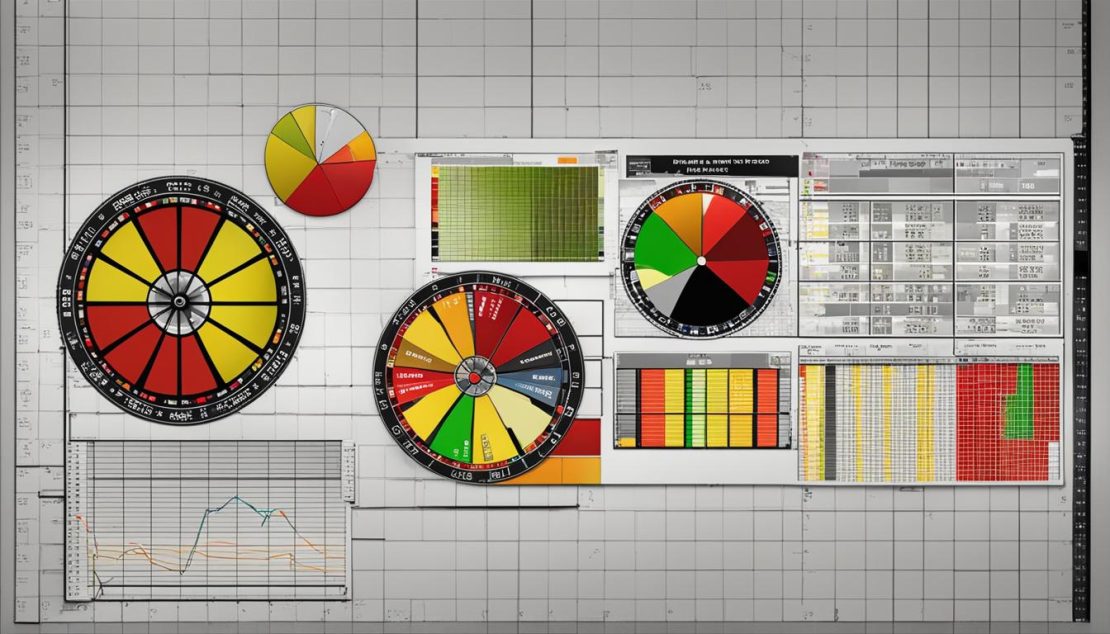Delving into the heart of modern entrepreneurship, marketing experiments emerge as a cornerstone for optimizing marketing strategies. At their core, these experiments are precision tools—meticulously crafted to slice through guesswork, unveiling the factual impact of distinct variables on your business’s marketing success. Whether finetuning email blast techniques or trialing new social media tactics, marketing experiments stand as the empirical bulwarks that support data-driven decisions and continuous campaign optimization.
Immersed in an era where information is both king and kingdom, the power to craft compelling narratives around product launches or brand interactions is potent. Utilizing rigorous marketing tests, the visionaries of the business world can accurately prognosticate which messages resonate and which will stutter into silence. Drawing upon insights from top-tier resources like the American Marketing Association and the revered perspectives within Robert Cialdini’s “Influence: The Psychology of Persuasion,” this piece ventures to unravel the layered complexity of marketing experimentation.
The Basic Principles of a Marketing Experiment
Embarking on a marketing experiment can be a transformative step towards elevating your brand’s strategic prowess. Establishing a foundation on the pillars of rigorous experimental design in marketing, companies can optimize their promotional tactics, enhance engagement, and ultimately catalyze growth.
Identifying Variables in Marketing Tests
The inception of any marketing experiment begins with the critical task of identifying variables. These might range from the content of a call-to-action to the means of content distribution. Let’s explore:
- Marketing Messages: Tailoring the tone and message to resonate with specific audience segments.
- Channels: Experimenting with social media, email, and other digital platforms to determine the most effective medium.
- Audience Segments: Understanding which demographics respond best to varying marketing tactics.
Creating a Hypothesis for Marketing Success
With variables selected, the crafting of a hypothesis acts as a guiding star for expected outcomes. Would an emotive narrative sell more products? If relatability is increased, will engagement surge? Such conjectures form the predictive core of your experiment.
Predictably, as Dan Ariely posits, irrational behaviors often guide consumer choices. Recognizing this allows marketers to anticipate and sculpt experiments with greater precision.
Measuring Results and Collecting Data
Essential to discerning the efficacy of any marketing campaign is the robust collection and analysis of data. Employing control groups in marketing and implementing A/B testing are methodologies at the forefront of this investigative process.
Key Performance Indicators (KPIs) offer tangible benchmarks for success. Beyond mere clicks, we delve into conversion rates, time spent on page, social shares, and other indicators of engagement and preference.
| KPI | Benchmark | Control Group | Test Group |
|---|---|---|---|
| Conversion Rate | 5% | 4.5% | 6% |
| Email Open Rate | 20% | 18% | 22% |
| Social Shares | 50/day | 45/day | 60/day |
As data is aggregated, the role of data analysis in marketing comes to the fore, enabling marketers to translate numbers into actionable insights, driving subsequent strategy.

Marketing Experiment: Types and Examples
In the ever-evolving landscape of marketing, split testing and multivariate testing stand out as two prominent techniques that marketers employ to fine-tune their strategies and drive better results. Split testing, often referred to as A/B testing, is the simpler of the two, putting two variations of a marketing element head-to-head to see which performs better.
On the other hand, multivariate testing is more complex, altering multiple variables to understand how they interact and affect the outcome. This type of testing can provide deeper insights into the most effective combinations of marketing elements. Both methods have strong track records in real-time marketing experiments, where immediate data is used to make quick strategic adjustments.

Major brands provide compelling case studies in marketing that highlight the success of these experiments. For example, Google’s frequent updates to its search algorithms are essentially large-scale multivariate tests intended to refine user experience and search relevance. Similarly, Coca-Cola has used split testing to make decisions about product variations and advertising approaches, helping them to stay agile and responsive to market trends.
- Split Testing: A straightforward approach comparing two versions to identify which is more effective.
- Multivariate Testing: A more sophisticated method that examines the impact of multiple variables simultaneously.
- Real-Time Marketing Experiments: Continuous testing processes that provide immediate feedback, allowing for swift strategic shifts.
Employing these testing methods requires a well-thought-out design, and when conducted effectively, they can lead to significant improvements in return on investment (ROI) and customer engagement. The learnings from these tests are invaluable, making them an indispensable part of a marketer’s toolkit.
Executing and Monitoring Your Marketing Experiment
Embarking on the journey of a marketing experiment requires meticulous planning and vigilant oversight for its effective execution and eventual triumph. Implementation hinges on an orchestrated sequence of actions that can position the marketing endeavor towards tangible success. Engaging in monitoring and campaign analysis is indispensable, offering insights that drive strategy optimization and utilization of marketing metrics.
Step-by-Step Process for Launching an Experiment
Commencing with a crystal clear definition of objectives is imperative, setting the stage for every ensuing step. A considered selection of the target audience frames the experimental canvas, while choosing the testing variables determines the picture to be painted. The type and duration of the test are fundamental decisions—akin to selecting the right brushes and strokes in artistry—that shape the campaign’s structure and ensure comprehensive insights. Launching the experiment, then, becomes the moment of unveiling, where theories and preparations are put to the litmus test of real-world interaction.
Tools for Tracking Marketing Experiment Results
Today’s marketer has access to an arsenal of tools, from the elemental utilities of analytics software to the complex algorithms of advanced platforms. These instruments are adept at capturing the pulse of customer engagement and the ripple effects of conversion metrics. They facilitate the accumulation and assimilation of data—breathing life into numbers and charts—and offer an unclouded view into user behaviors and preferences. With these at hand, the executioner of a marketing experiment can measure progress with precision, transforming raw data into actionable intelligence.
Adjusting Your Strategy Based on Experiment Outcomes
Interpreting the experimental tapestry woven by collected data is a craft in its own right. It demands astuteness to distinguish patterns and the pragmatic adaptability to harness this knowledge for refinement. Post-experiment, the information conduits lead to strategic outlooks that should be reassessed and, if necessary, recalibrated. The continuous loop of testing, measuring, learning, and modifying underpins the constant evolution of marketing tactics. Ultimately, this process culminates in an optimized strategy that resonates more profoundly with audiences and meets business ambitions with greater accuracy.

